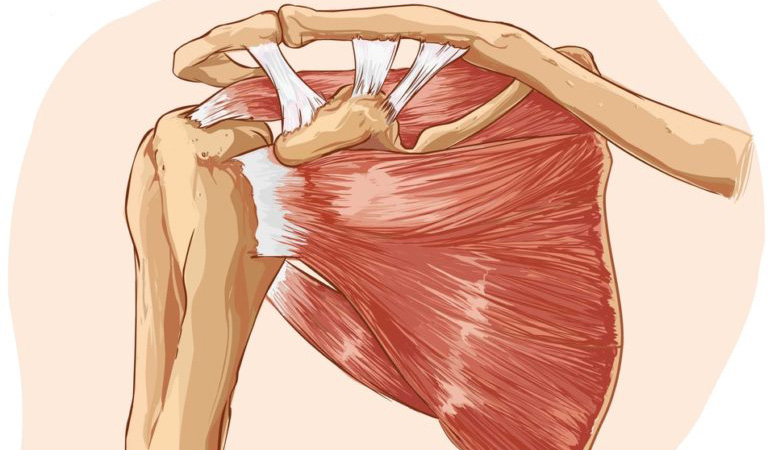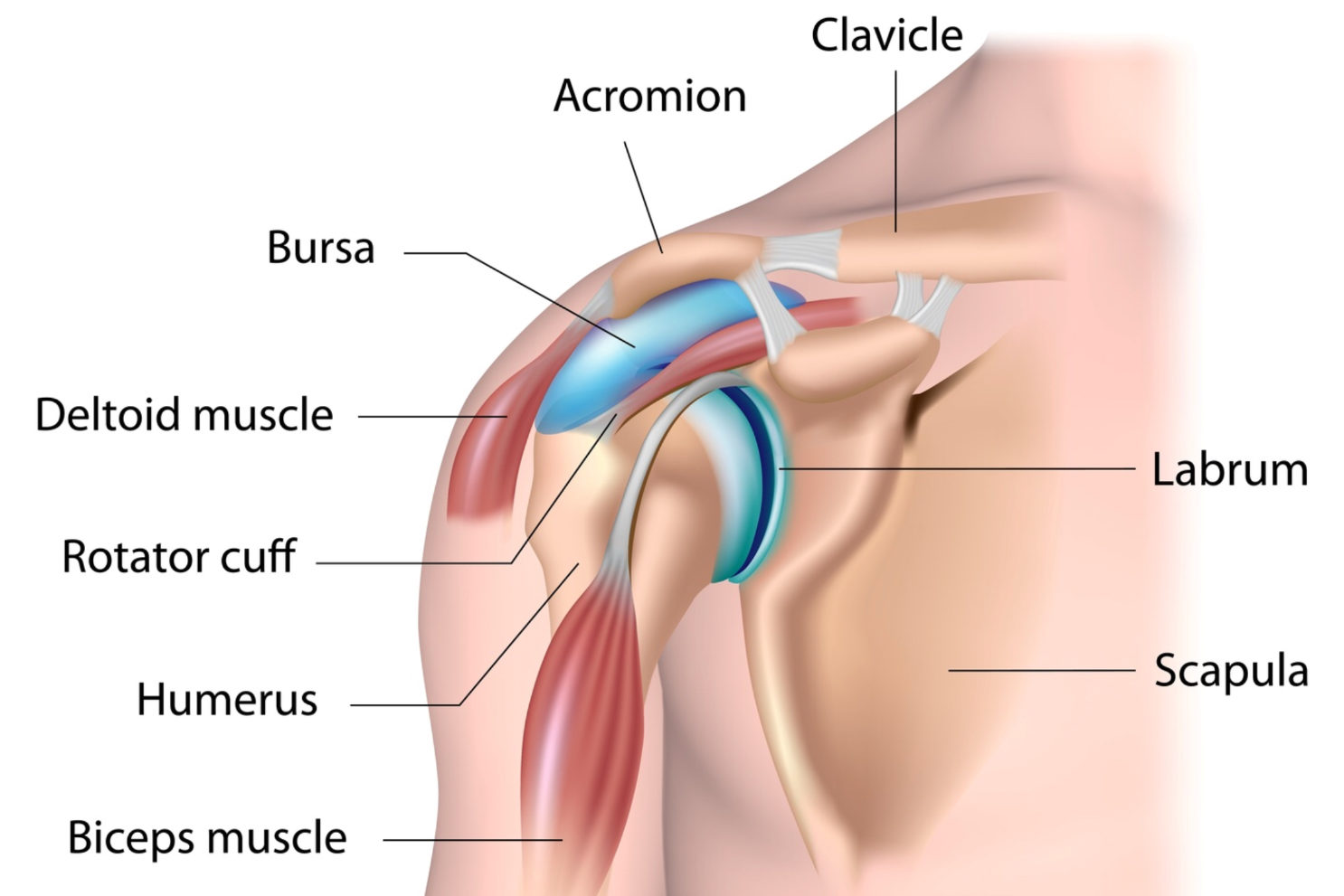
The shoulder joint is surrounded and stabilized by a sleeve of muscles known as the rotator cuff (supraspinatus, infraspinatus, subscapularis, and teres minor muscles). The four muscles are responsible for the stabilization and control of the way the shoulder moves. The muscles are also responsible for rotation of the shoulder and they form a cuff around the head of the long bone in the arm that ends in the shoulder (humerus).
The tendons and muscle groupings encompassing the rotator cuff are prone to tears, tendonitis and impingement and related injuries. Injuries range from mild tendonitis, bursitis of the shoulder, calcification of parts of the tendon all of the way through to a partial or full rotator cuff tear, which may result in a need for surgical repair.
Common Injuries to a Rotator Cuff
- Impingement
- Rotator cuff partial tear
- Rotator cuff full tear
- Bursitis
- Shoulder tendonitis
Signs of Rotator Cuff Injuries
Each rotator cuff injury will present with its own set of symptoms, but it is within reason to suspect a shoulder injury involving a rotator cuff if there are any of the following symptoms:
- Pain or clicking when the injured arm is held at shoulder height or overhead
- Pain that extends from the top of the shoulder to the elbow
- Pain when lying on the injured shoulder
- Shoulder pain while at rest
- Shoulder pain and muscle weakness when attempting to lift overhead
- Pain when attempting to put the hand on the injured arm behind the back
- Pain when reaching across the body for a seatbelt
Diagnosing a Rotator Cuff Injury
The initial evaluation will include a range of motion assessment of both the left and right shoulder. The range of motion assessment is typically done passively and actively. If a broken bone is suspected, this portion of the evaluation may be delayed.
In addition to a range of motion assessment, to successfully diagnose a rotator cuff injury, it will be necessary to employ advanced imaging in the form of either an MRI or an ultrasound of the surrounding tissue.
MRI for Shoulder Injuries
The MRI has become the preferred method for diagnoses of significant shoulder injuries because it allows a medical professional to study all of the structures that encompass the rotator cuff. An MRI can also identify degenerative changes, tears of the muscles and tendons, or a combination of shoulder maladies.
Ultrasound for Shoulder Injuries
The ultrasound is well-suited for evaluation of damage to muscles and tendons, but it will not easily show a medical professional if there has been any injury to the bones of the shoulder. The one major benefit of the ultrasound is that it can be completed when the shoulder is being manipulated in a range of motion evaluation, and can find locations where the rotator cuff is bine impinged.
Treating a Rotator Cuff Injury
If a rotator cuff injury is suspected, it is necessary to confirm how the rotator cuff injury occurred and which shoulder structures are involved because treatment will vary depending on the specific combination of injuries.
Because each patient is different, shoulder joint pain and the treatment options are just as varied. Shoulder pain can very difficult to live with, and at Orthopaedic Medical Group of Tampa Bay, we have experts in the field of arthroscopy and sports medicine who are ready to help patients return to a pain-free and normal lifestyle. Please call 813-684-2663 (BONE) or visit this page to make an appointment and let our highly skilled team of medical professionals help you.

Dr. Edward H. Becker is a Subspecialty Certified Sports Medicine Surgeon and General Orthopaedic Specialist. He earned his B.S. degree in biological sciences from the University of Maryland, Baltimore County and his MD from University of Maryland School of Medicine. After medical school, Dr. Becker continued his training as a resident in the Department of Orthopaedic Surgery at the University of Maryland Medical Center and R Adams Cowley Shock Trauma Center. After completion of his residency, Dr. Edward Becker elected to further his training in Sports Medicine and was selected to do a fellowship at the world renowned Kerlan-Jobe Orthopaedic Clinic in Los Angeles, California. He has worked with numerous college athletic programs and professional teams including the world champion Los Angeles Kings, Los Angeles Lakers, Los Angeles Dodgers, Los Angeles Sparks, Anaheim Angels, Anaheim Ducks. Dr. Becker has been with the Orthopaedic Medical Group of Tampa Bay since 2013. Full Bio





